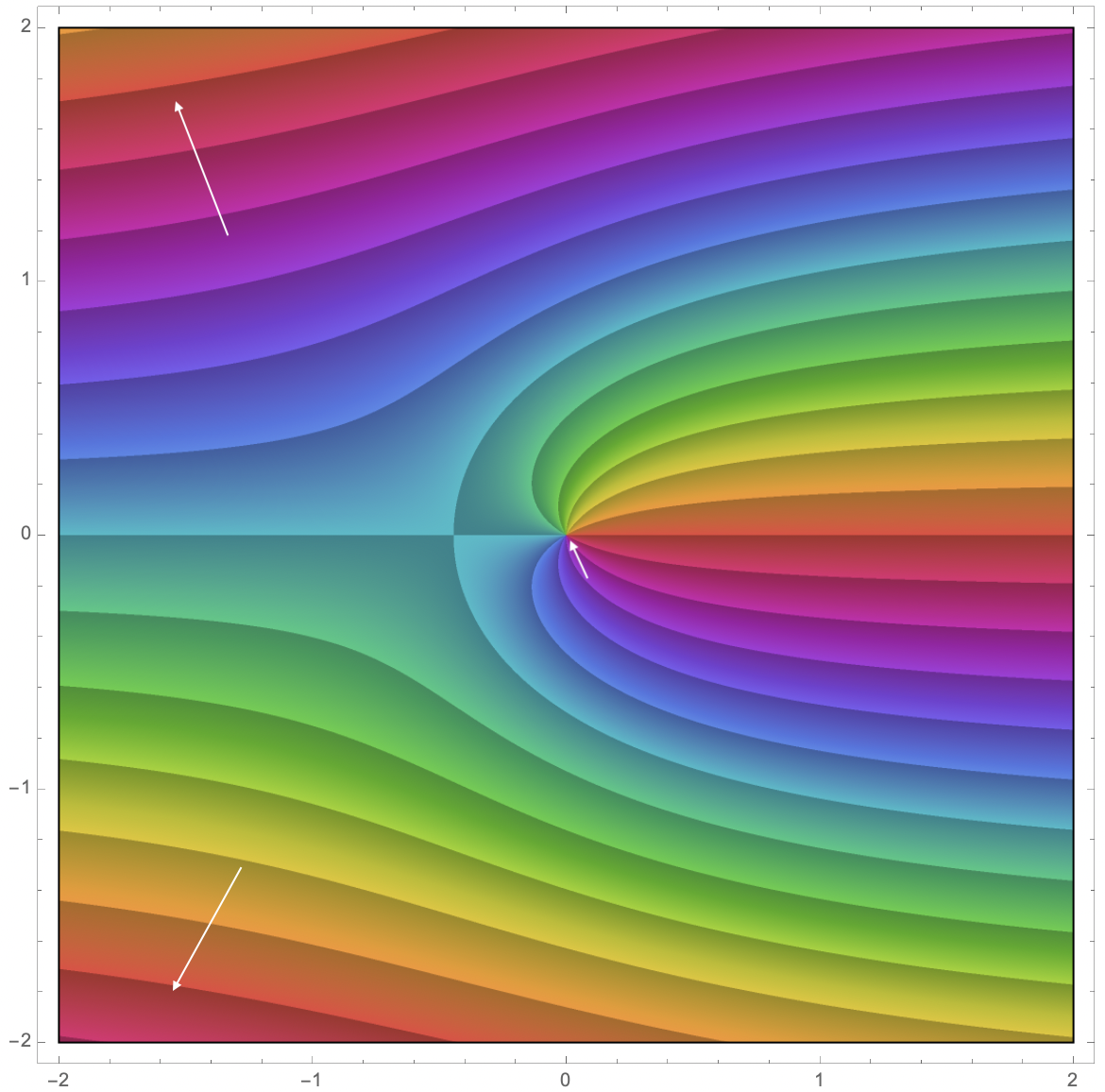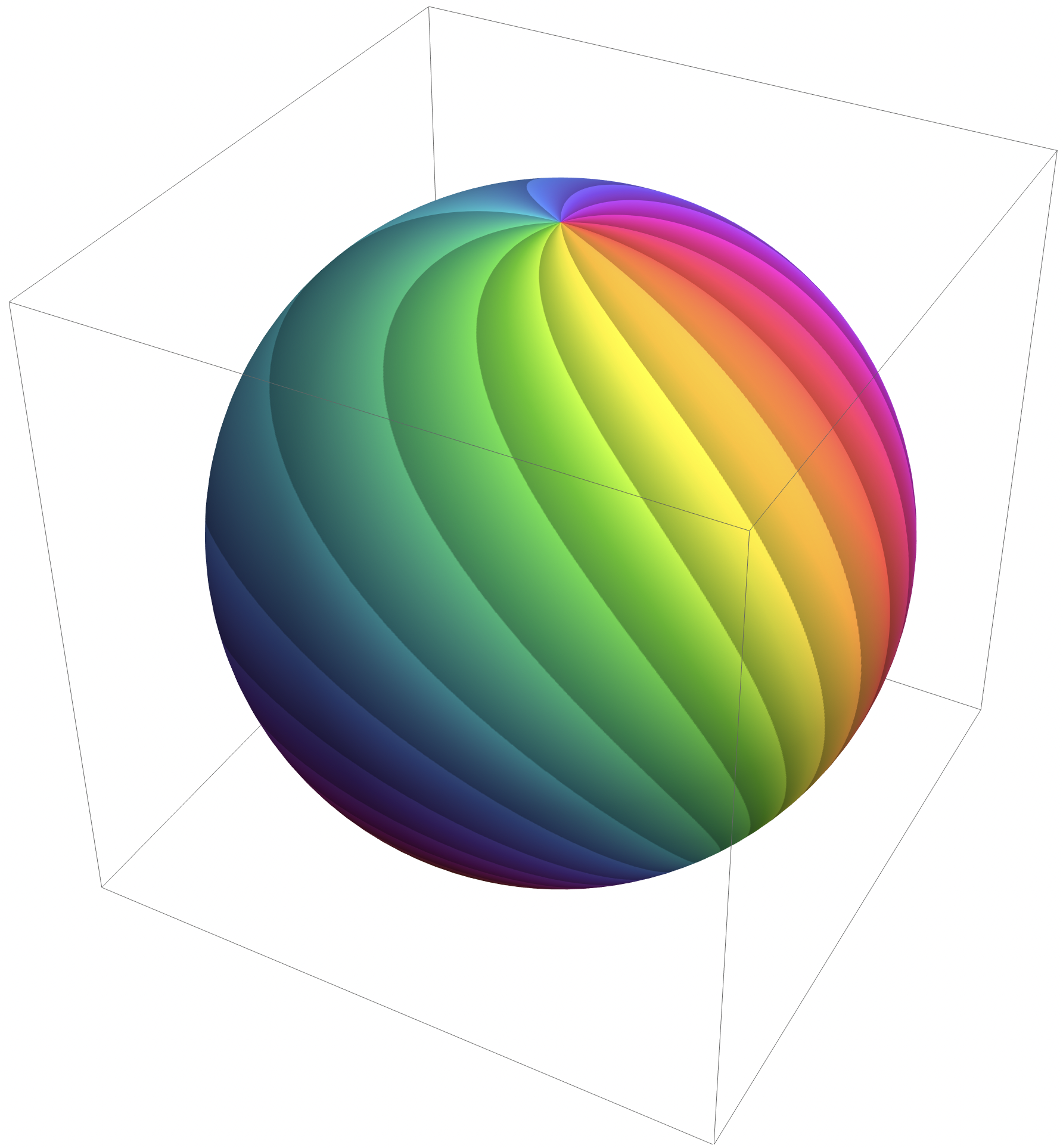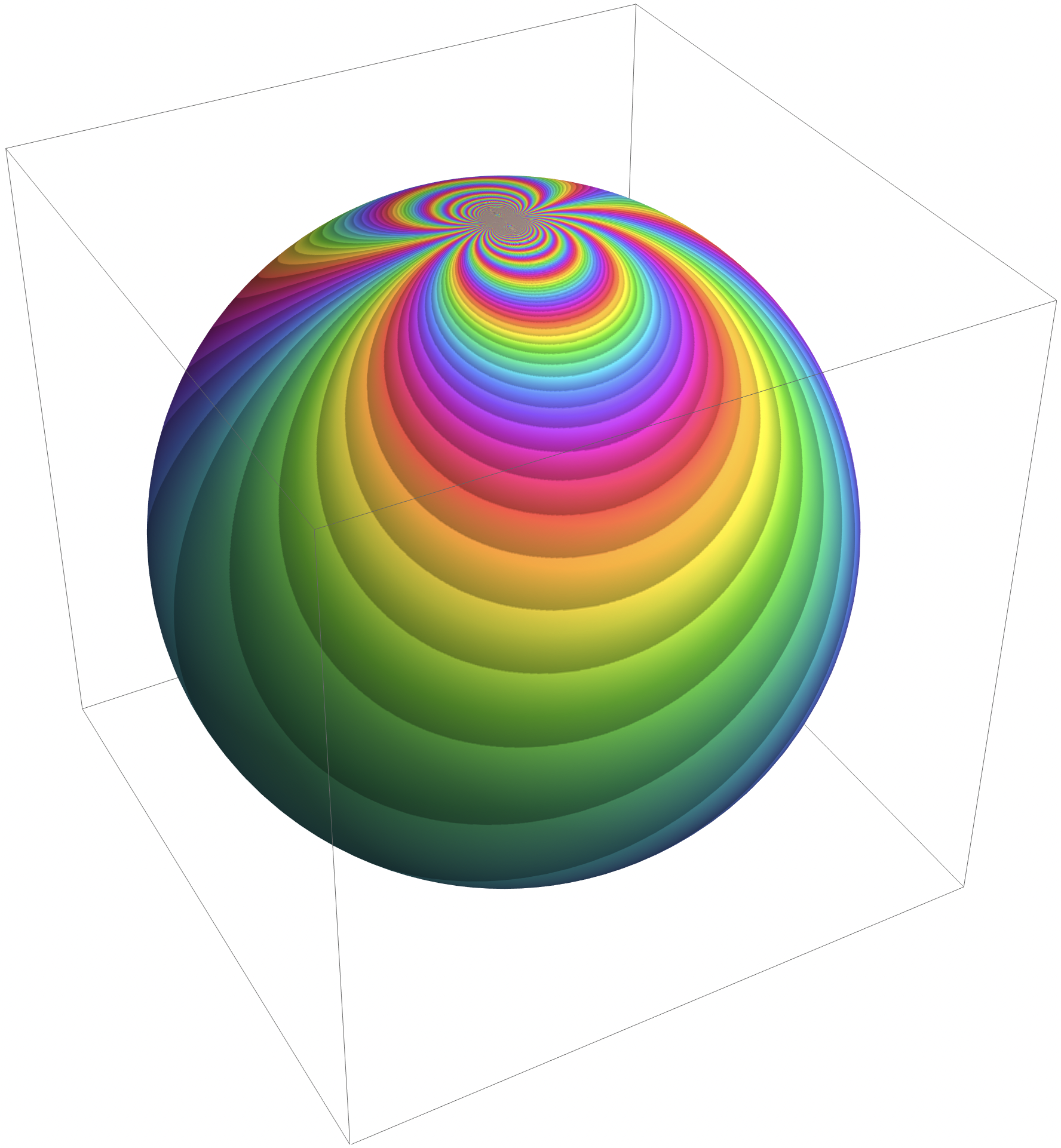I think this might just be a characteristic of plotting in the complex plane. Take a look at https://community.wolfram.com/groups/-/m/t/2543358.
In these type of plots, zeros, poles, and essential singularities are illustrated quite nicely here.

This particular function has a zero at the origin and an essential singularity at infinity, shown by the white arrows:
f[z_?NumericQ] := Exp[I (2.25 Im[z])] z
ComplexPlot[f[z], {z, 2}, ColorFunction -> "CyclicArg"]

The essential singularity can be seen on the Riemann sphere. Below, the south pole shows the zero at the origin and the north pole shows the essential singularity at infinity.
plot = ComplexPlot[f[Tan[Im[z]/2] Exp[I*Re[z]]], {z, -π, π + π*I}, ColorFunction -> "CyclicArg", RasterSize -> 2048];
texture = ImageResize[Cases[plot, _Image, ∞][[1]], Scaled[{1, 1/2}]];
rsphere = SphericalPlot3D[1, {u, 0, π}, {v, -π, π}, Mesh -> None,
TextureCoordinateFunction -> ({#5, 1 - #4} &),
PlotStyle -> Texture[texture], Lighting -> "Neutral", Axes -> False,
PlotPoints -> 100, SphericalRegion -> True
];
South pole:
Show[rsphere, ViewPoint -> {-1.3, -2.4, 2.}, ViewVertical -> {0, 0, -1}]

North pole:
Show[rsphere, ViewPoint -> {1.3, 2.4, -2.}, ViewVertical -> {0, 0, 1}]
